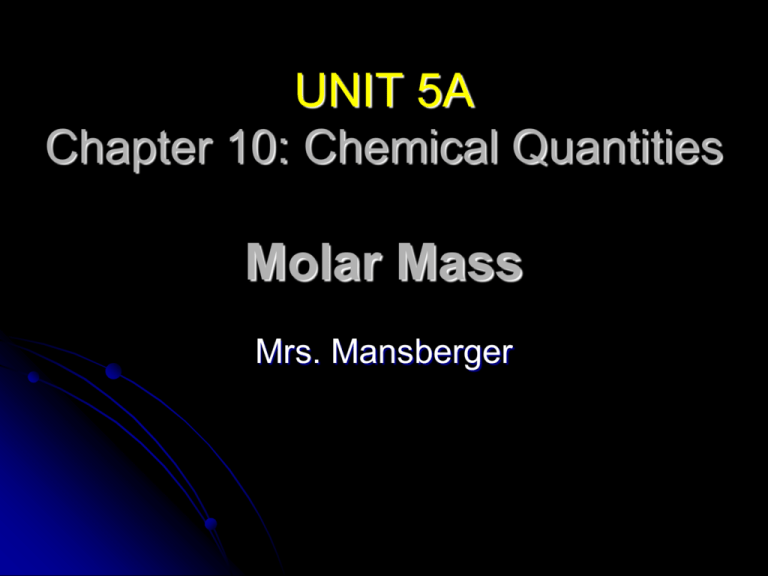Chapter 10: Chemical Quantities Molar Mass
advertisement

UNIT 5A Chapter 10: Chemical Quantities Molar Mass Mrs. Mansberger What is Molar Mass? Element: The atomic mass of an element expressed in grams is the mass of one mole of the element. Example: 16.0 g Oxygen = 1 mol Oxygen 12.0 g Carbon = 1 mol Carbon With your partner, find the molar masses of the following elements… 35.5 g/mole Chlorine Sodium 23.0 g/mole Iron 55.8 g/mole Compound: The sum of the atomic masses of each atom in the compound. Example: SO3 Find the molar masses of each element. Then multiply by the number of atoms of each element. Finally, add the masses together. S = 32.1 g X 1 = 32.1 g O = 16.0 g X 3 = 48.0 g 80.1g/mole OR 80.1 g SO3 = 1 mol SO3 Find the Molar Mass of a Compound Find the molar mass of aluminum sulfate: Al2(SO4)3 Al = 27.0 g X 2 = 54.0 g S = 32.1 g X 3 = 96.3 g O = 16.0 g X 12 = 192 g + 342 g/mole OR 342 g Al2(SO4)3 = 1 mol Al2(SO4)3 Try these with your partner… Find the molar mass of PCl3 P = 31.0 g X 1 = 31.0 g Cl = 35.5 g X 3 = 107 g + 138 g PCl3 = 1 mol PCl3 138 g/mole Find the molar mass of H2CO3 H = 1.0 g X 2 = 2.0 g C = 12.0 g X 1 = 12.0 g O = 16.0 g X 3 + = 48.0 g 62.0g/mole 62.0 g H2CO3 = 1 mol H2CO3



